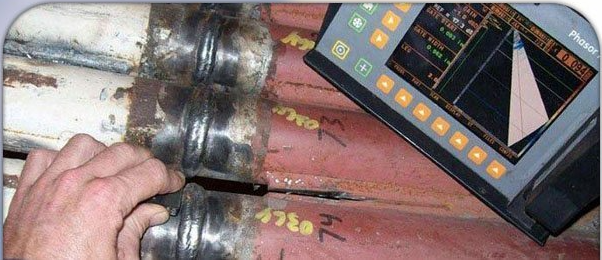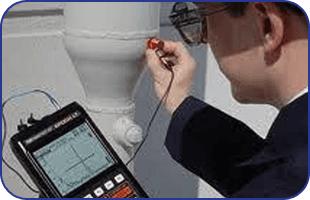Need A Sound Solution To A Measurement Problem?
You've come to the right place. With ultrasonic testing, thickness of material can be measured and flaws detected. The thicker the material, the more useful ultrasonic testing is.


Ultrasonic Testing (UT) uses high frequency sound energy to conduct examinations and perform measurements. Considerable information may be gathered during ultrasonic testing such as the presence of discontinuities, material or coating thickness.
The detection and location of discontinuities is enabled by the interpretation of ultrasonic wave reflections generated by a transducer. These waves are introduced into a material and travel in a straight line and at a constant speed until they encounter a surface. The surface interface causes some of the wave energy to be reflected and the rest of it to be transmitted.
The amount of reflected vs. transmitted energy is detected and provides information on the size of the reflector, & therefore the discontinuity encountered.
Ultrasonic Testing (UT) uses high frequency sound energy to conduct examinations and make measurements. Ultrasonic Inspection can be used for flaw detection/evaluation, dimensional measurements, material characterization, and more.
Ultrasonic Inspection is a very useful and versatile NDT method.
Some of the advantages of Ultrasonic Inspection that are often cited include:
- It is sensitive to both surface and subsurface discontinuities
- The depth of penetration for flaw detection or measurement is superior to other NDT methods.
- Only single-sided access is needed when the pulse-echo technique is used.
- It is highly accurate in determining reflector position and estimating size and shape.
- Minimal part preparation is required.
- Electronic equipment provides instantaneous results.
- Detailed images can be produced with automated systems.
- It has other uses, such as thickness measurement, in addition to flaw detection.

